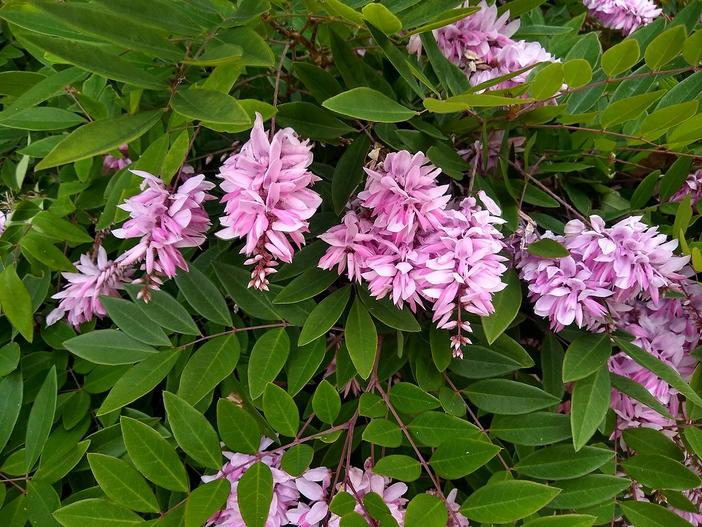Chinese Indigo
(Indigofera decora)
Chinese Indigo (Indigofera decora)
/
/

Tatters ✾
CC BY 2.0
Image By:
Tatters ✾
Recorded By:
Copyright:
CC BY 2.0
Copyright Notice:
Photo by: Tatters ✾ | License Type: CC BY 2.0 | License URL: https://creativecommons.org/licenses/by/2.0/ | Uploader: Tatters ✾ | Publisher: Flickr



















Estimated Native Range
Summary
Indigofera decora, commonly known as Chinese Indigo, is a deciduous shrub native to woodland edges and open forests in China and Japan. It typically grows 1–2.5 feet tall and 3-4 feet wide, with a loose, spreading habit. The foliage is pinnate with oval leaflets, providing a delicate texture in the landscape. From early summer to fall, it produces axillary racemes of light pink or purple pea-like flowers, each raceme displaying twenty to forty flowers, which are quite showy and attract pollinators. The calyxes have broadly triangular lobes. After flowering, it may produce small, inconspicuous pods.
Chinese Indigo is valued for its long blooming period and the soft color of its flowers, which can add a subtle charm to garden borders, rock gardens, and as a ground cover. It is also historically significant for its use in producing indigo dye. This shrub is adaptable to a range of soil conditions but prefers well-drained, neutral to slightly alkaline soils. It is somewhat heat and drought tolerant and can benefit from afternoon shade in hot, humid climates. While it thrives in full sun, it can also tolerate part shade. Chinese Indigo is cold hardy in USDA zones 7–11. Gardeners should be aware that it may require protection from winter cold in the northern parts of its range and can be pruned in spring to maintain a compact form.CC BY-SA 4.0
Chinese Indigo is valued for its long blooming period and the soft color of its flowers, which can add a subtle charm to garden borders, rock gardens, and as a ground cover. It is also historically significant for its use in producing indigo dye. This shrub is adaptable to a range of soil conditions but prefers well-drained, neutral to slightly alkaline soils. It is somewhat heat and drought tolerant and can benefit from afternoon shade in hot, humid climates. While it thrives in full sun, it can also tolerate part shade. Chinese Indigo is cold hardy in USDA zones 7–11. Gardeners should be aware that it may require protection from winter cold in the northern parts of its range and can be pruned in spring to maintain a compact form.CC BY-SA 4.0
Plant Description
- Plant Type: Shrub
- Height: 1-2.5 feet
- Width: 3-4 feet
- Growth Rate: Moderate
- Flower Color: Pink
- Flowering Season: Summer
- Leaf Retention: Deciduous
Growth Requirements
- Sun: Full Sun, Part Shade
- Water: Medium
- Drainage: Slow, Medium
Common Uses
Bee Garden, Butterfly Garden, Drought Tolerant, Groundcover, Low Maintenance, Rock Garden, Showy Flowers
Natural Habitat
Woodland edges and open forests in China and Japan
Other Names
Common Names:
Scientific Names: , Indigofera decora, Indigofera incarnata, Indigofera decora var. ichangensis, Indigofera ichangensis, Indigofera decora var. cooperi, Indigofera cooperi, Indigofera decora var. alba, Indigofera ichangensis f. calvescens, Indigofera chalara
GBIF Accepted Name: Indigofera incarnata (Willd.) Nakai